In early June 2022, floodwaters ravaged the northern tier of Yellowstone National Park, destroying roads and bridges and wreaking havoc on communities from Gardiner Mont, north through Paradise Valley and beyond the fishy little town of Livingston.
Torrential rain coupled with ill-timed snowmelt created the “perfect storm,” a once-in-500-years event, that reminded us that nature is almost always in charge. As we watched television news broadcasts of America’s signature national park succumbing to the whims of the weather, most of us assumed it would be years before the park could “recover” enough to be enjoyed by people again.
Thankfully, that wasn’t the case. With moonshot perseverance, the National Park Service worked around the clock, and, before summer was over, most of the human access lost during the floods was restored. Access to the Yellowstone through Paradise Valley was also restored, and by the end of summer, anglers were once again chasing big trout in what might by America’s signature coldwater fishery.
But the economic and environmental damage persisted, so people stepped up. Efforts were put into play to help local communities that depend heavily on the area’s rivers for their economic survival. Donations piled up for out-of-work fishing guides. PR campaigns pushed out the news that the rivers were going to be fine, and that fishing would continue once the waters subsided.
But, on the heels of a global pandemic, the Yellowstone floods amounted to an economic gut-punch for a region that depends so heavily on summer traffic to make ends meet financially. While the summer of 2022 wasn’t a complete loss, it surely tested the mettle of the regional community.
Now, with another spring runoff on the horizon and understandable worries that last year’s floods will have lasting effects on everything from commerce to the fisheries in the region, Bozeman-based Simms Fishing Products has launched another funding mechanism to help make the region whole again.
With its launch of the company’s new Watershed stockingfoot wader, Simms hopes to provide vital seed money needed for area non-profits to begin to tackle the herculean task of restoring area watersheds scoured by the 2022 floods. Just last fall, Simms donated $10,000 to Montana Freshwater Partners to launch a fund that will be used to help with restoration efforts in the Yellowstone ecosystem. And this week, Simms announced that $50,000 raised from the sales of its new Watershed waders will go through MFP and into the Yellowstone River Stewardship Campaign, a campaign developed to engage the community, out-of-state visitors and businesses to give back to projects that support the overall health and vitality of the Yellowstone River.
And these aren’t just “throw-away” waders made for a quick-and-dirty fundraising campaign. The Watershed waders are patterned after Simms’ popular G3 Guide waders, sporting three layers of Gore-tex above the waist and four layers throughout the lower half. Additionally, Simms has incorporated its front and back leg seams, a pass-through pocket on the chest and all the expected accouterments that come with premium waders built to last a while. The waders come in eight sizes, and are available starting this week. They retail at $599.95 and can be purchased either directly through Simms or via its network of retailers.
The money for the $50,000 donation to the Yellowstone River Stewardship Campaign will come from the sales of the new Watershed waders. According to Simms, the money directed into the campaign “will be invested in conservation and restoration projects that will improve water quality, fish habitat, late season flows and floodplain connectivity.”
Wendy Weaver, executive director of Montana Freshwater Partners, sees the coming donation from Simms as a big part of the organization's efforts to identify and then help fund projects in the Shields and Yellowstone river drainages. Prior to the flood, MFP was busy identifying projects in these drainages that were in need of restoration in order to make them more resilient during the ongoing drought.
“We had to pivot a bit when the floods hit last year,” Weaver said. “But the good news is that just about every project we identified to help make the rivers more resilient to drought also helps these systems deal with floods.”
Identified projects include everything from identifying fish passage obstacles to restoring beavers to arid landscapes to reopening blocked side channels.
“We probably identified a dozen potential projects in the Yellowstone and another two dozen in the Shields that would help the river become more climate resilient,” Weaver said. The Shields is a tributary to the Yellowstone River.
While the Simms donation is happily accepted, Weaver said, there’s a real need for more funding. And, she said, MFP is working across the region to raise money that it can then gift to other non-profits that are willing to tackle the list of priorities. For clarity, the $50,000 from Simms won’t go to just one project. Instead, bits and pieces of it – and portions of other donations from both private and public entities – will likely be used as matching funds so groups like the Upper Yellowstone Watershed Group or the Park County Environmental Council can go after larger grants from foundations or federal agencies. That’s how big restoration projects get done, Weaver said.
Raising money to fund restoration work in the Yellowstone drainage is something of a new challenge for MFP. The organization was originally founded in 2011 to address the loss of wetland habitat across Montana. The ongoing drought, and the now the 2022 floods, have allowed the group to shift its focus to the Yellowstone basin.
“We’re kind of building the plane as we fly it,” Weaver said. “We’re trying to figure out the best way to roll this out and then build on it. To be successful, we’re being collaborative with businesses and non-profits, and using their ideas to help us with this challenge.”
That’s where Simms comes in.
“The idea behind the Watershed waders was to find a way to give back to the area that’s always been so good to us,” said John Frazier. For years, Simms has been very good about donating money to various non-profits working in the Yellowstone region, whether it was to help with lake trout removal in Yellowstone Lake or to tackle smaller restoration projects in the region.
But, the $60,000 earmarked for MFP is one of the biggest the company has ever made. And, judging by MFP’s list of restoration priorities in the Yellowstone basin, it might be the most impactful.
“When the disaster happened last year, we decided to lean in and make a product that gives back, and it gives back to arguably the most iconic watershed in America,” Frazier said.







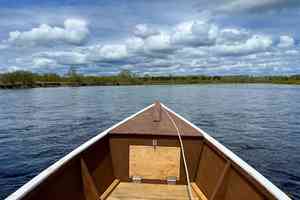


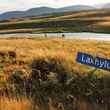

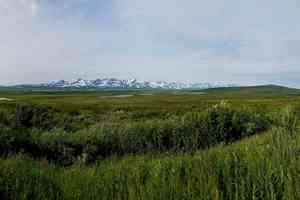







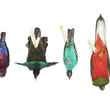






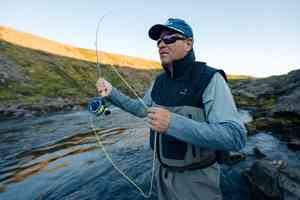


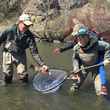

Comments
Double B replied on Permalink
I guess something is better than nothing, but for a company that sells $1000 waders and $500 wading boots seems more like a marketing ploy than anything. Throw another zero in the total donation and now you’ve got something.
Pages